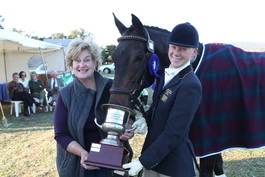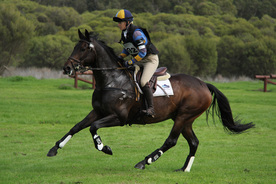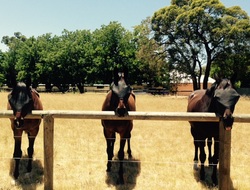
Tradition, in many respects, is a wonderful thing and I personally think it is great that we still ride in jackets and stocks despite the new and fancier options that we could potentially have adopted. I’m such a stickler for tradition that I still wear my stock under my XC colours in the cross-country phase and have an older style jacket for showjumping (to the despair of my friends who tease me about it frequently!). That said, the training system we use, while it still includes many of the traditional ideas, is completely new age, science based and built on some principles that we were unaware of generations ago.
I guess what I’m eluding to is that tradition is great, but there is a fine line between loving tradition and being backward. When it comes to working with animals it is always important to be forever looking forward and always questioning.
As Stephen Budainsky says: “Science is beginning to allow the horse to tell its own story. And indeed I would argue that at this late date in the shared history of man and horse it is only the objective tools of science that can sort out what millenniums of tradition, love, and wishful thinking have sometimes muddles.”
Science is no magic elixir, but I feel that after 6000 years of much wishful thinking and distorting myth, science holds a source of truth that we need if we are to approach the horse with a clear mind.
Humans were riding horses at least 500 years before the wheel was invented, so it is no surprise that our histories are so entwined that it is sometimes very hard to believe that the horse is a completely different animal to us. He sees, hears, processes and thinks in completely different ways. He is not just a slightly backward person dressed up in a horse costume – despite what we sometimes want to believe.
Let’s have a look at a few traditions that might have slipped through the cracks and, if we look at them objectively, we might realise that we could do away with some of them while being just as well off and make the world a slightly nicer place for the horse.
I guess what I’m eluding to is that tradition is great, but there is a fine line between loving tradition and being backward. When it comes to working with animals it is always important to be forever looking forward and always questioning.
As Stephen Budainsky says: “Science is beginning to allow the horse to tell its own story. And indeed I would argue that at this late date in the shared history of man and horse it is only the objective tools of science that can sort out what millenniums of tradition, love, and wishful thinking have sometimes muddles.”
Science is no magic elixir, but I feel that after 6000 years of much wishful thinking and distorting myth, science holds a source of truth that we need if we are to approach the horse with a clear mind.
Humans were riding horses at least 500 years before the wheel was invented, so it is no surprise that our histories are so entwined that it is sometimes very hard to believe that the horse is a completely different animal to us. He sees, hears, processes and thinks in completely different ways. He is not just a slightly backward person dressed up in a horse costume – despite what we sometimes want to believe.
Let’s have a look at a few traditions that might have slipped through the cracks and, if we look at them objectively, we might realise that we could do away with some of them while being just as well off and make the world a slightly nicer place for the horse.







 RSS Feed
RSS Feed
